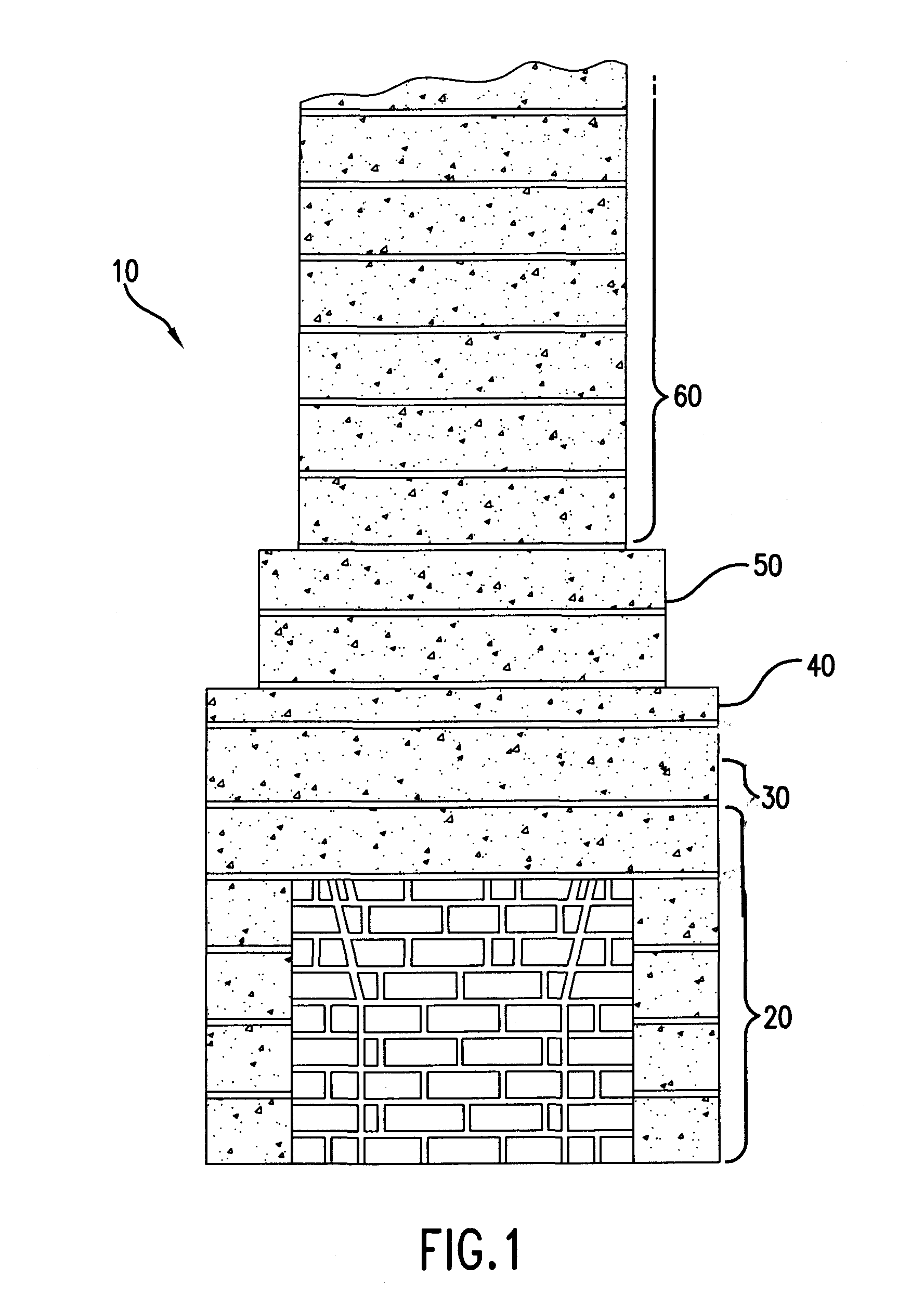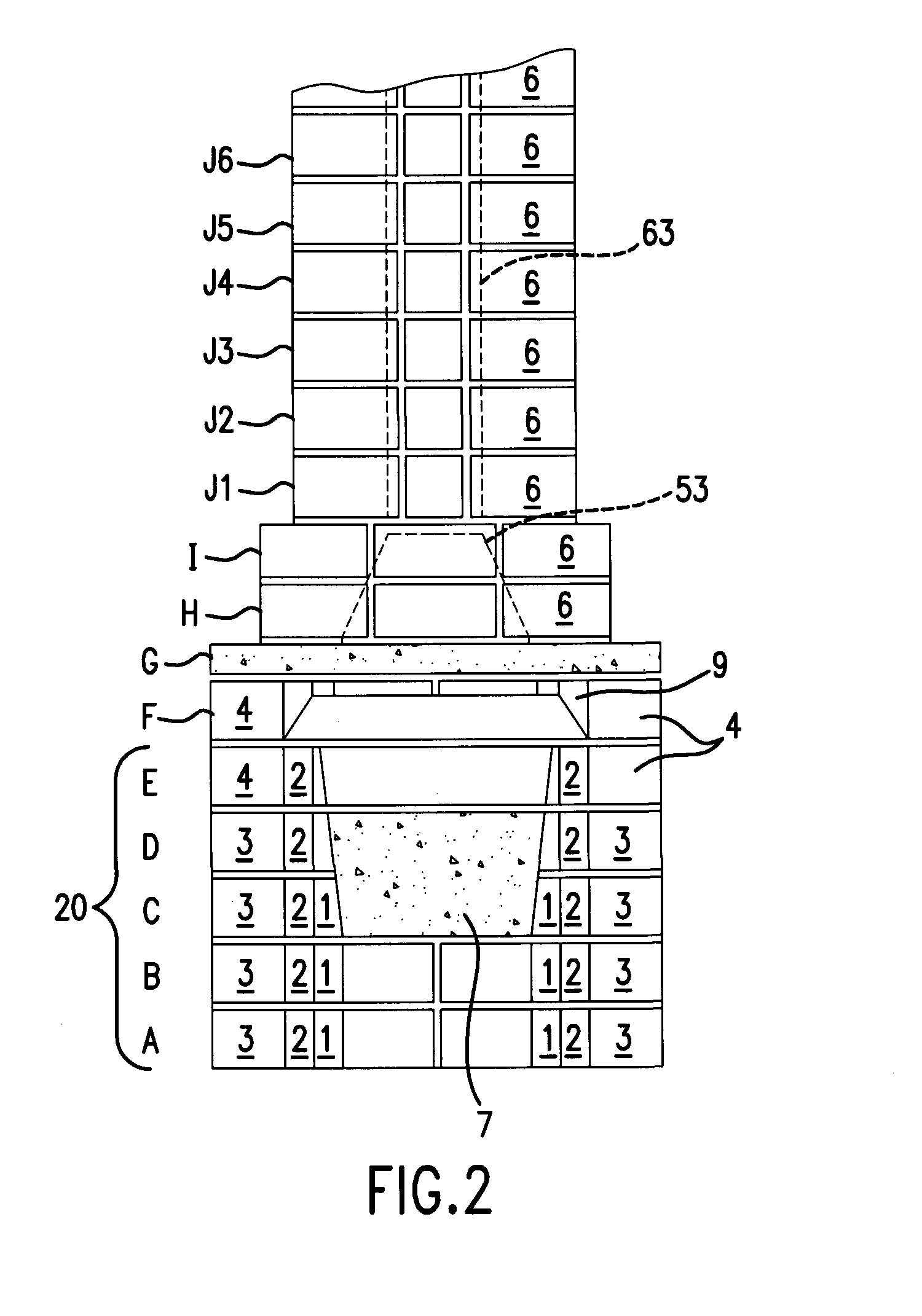Modular fireplace and chimney
a module and fireplace technology, applied in the field of modules, can solve the problems of inconvenient installation, inconvenient maintenance, and inconvenient maintenance, and achieve the effect of simplifying the masonry construction
- Summary
- Abstract
- Description
- Claims
- Application Information
AI Technical Summary
Benefits of technology
Problems solved by technology
Method used
Image
Examples
Embodiment Construction
[0043]The present invention now will be described more fully hereinafter with reference to the accompanying drawings, in which preferred embodiments of the invention are shown. This invention may, however, be embodied in many different forms and should not be construed as limited to the embodiments set forth herein; rather these embodiments are provided so that this disclosure will be thorough and complete, and will fully convey the scope of the invention to those skilled in the art.
[0044]Referring now to FIG. 1, there is shown a front view of the modular fireplace and chimney 10 of the present invention showing the various sections making up the masonry courses. The sections include the firebox, damper level 30, structural shelf level 40, tapered smoke chamber level 50, and the chimney 60. The modular fireplace and chimney 10 is made of specially formed modular concrete members laid in prescribed configurations in horizontal masonry courses.
[0045]Turning first to the firebox, there...
PUM
 Login to View More
Login to View More Abstract
Description
Claims
Application Information
 Login to View More
Login to View More - R&D
- Intellectual Property
- Life Sciences
- Materials
- Tech Scout
- Unparalleled Data Quality
- Higher Quality Content
- 60% Fewer Hallucinations
Browse by: Latest US Patents, China's latest patents, Technical Efficacy Thesaurus, Application Domain, Technology Topic, Popular Technical Reports.
© 2025 PatSnap. All rights reserved.Legal|Privacy policy|Modern Slavery Act Transparency Statement|Sitemap|About US| Contact US: help@patsnap.com



